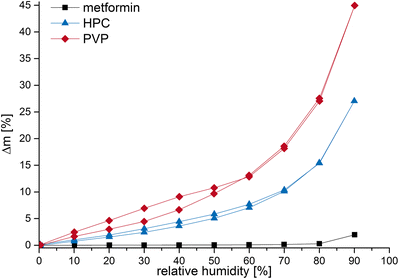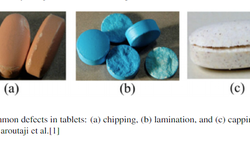Scientific papers
Metformin is known for its poor tabletability and flowability, typically requiring wet granulation with a binder prior to tableting. To enhance cost-effectiveness, there is a desire to implement a roll compaction/dry granulation (RCDG) process for metformin, eliminating the need for wet granulation. The efficiency of dry binders is pivotal in the success of RCDG to achieve high drug load and favorable properties of dry granules and tablets. In this study, we assess dry granules produced by RCDG and subsequent tableting of formulations with high metformin content (≥ 87.5%). Fine particle grades of hydroxypropylcellulose and copovidone, in varying fractions, are compared as dry binders based on previous findings. The formulations prove suitable for RCDG and tableting, with results correlating to in-die and out-of-die compressibility analysis. The addition of 7% dry binder strikes a balance, ensuring adequate mechanical properties while conserving resources and maintaining a high metformin content. Hydroxypropylcellulose exhibits greater efficiency in terms of granule size, tensile strength, and friability. To meet the US Pharmacopeia dissolution specifications, 3% croscarmellose is added. The final formulation achieves an 87.5% metformin content, maintaining robust tensile strength of tablets regardless of the specific compaction forces applied during granulation.

Comments
No comments posted yet.
Add a comment














